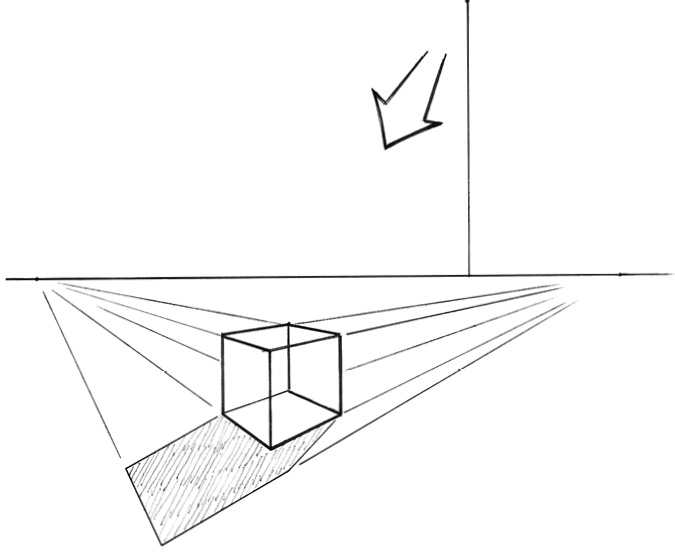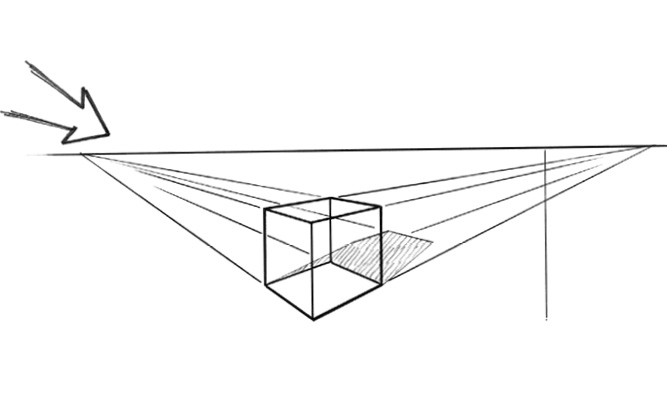Plotting Structures
While the concept of plotting shadows may seem daunting, a basic understanding of it will help you to draw realistically. There are two primary methods of plotting a shadow. One is for when the light source is in the background and can be shown on the drawing; the other is for when the light source is in the foreground and cannot be seen directly. Both of these methods use the principles of linear perspective. You must also plot out the horizon line and vanishing points to be able to get the right perspective for the shape of the object’s shadow.

Light Source in the Background
In this example, the light source is in the background. Notice that there is a line coming straight down from the light source to the horizon. That point on the horizon is the shadow’s vanishing point. From this vanishing point, draw lines passing through the bottom corners of the cube. Next, draw lines from the light source passing through the top corners of the cube. The intersections between the shadow’s vanishing point lines and the light source lines will make the shape of the shadow on the ground.

Unseen Light Source in the Foreground
Though the general direction of the light is assumed, the light source is so far away that it cannot be indicated in the drawing. Because of this, the direction of the light and where those lines would converge on the horizon will be a vanishing point. Then draw lines from this vanishing point and pass them through the bottom corners of the cube. Next, plot the lines coming from the vanishing point of the angle of the light source. Place this vanishing point below and perpendicular to the other vanishing point. From this point, draw lines that pass through the top corners of the cube. The intersection of these lines will form the shape of the shadow of the cube.

